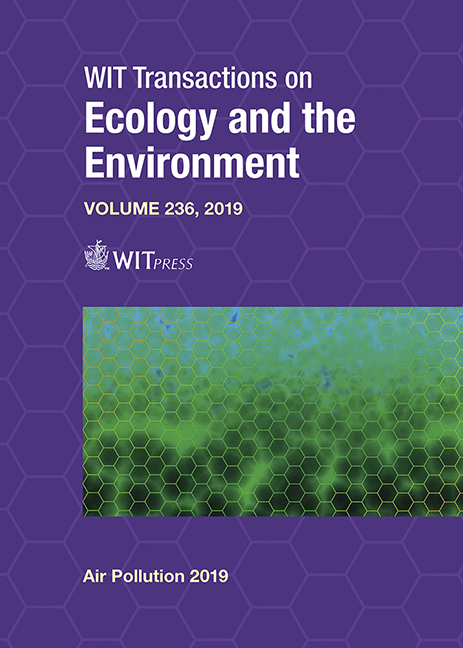REAL-TIME ATMOSPHERIC MONITORING OF URBAN AIR POLLUTION USING UNMANNED AERIAL VEHICLES
Price
Free (open access)
Transaction
Volume
236
Pages
10
Page Range
79 - 88
Published
2019
Size
597 kb
Paper DOI
10.2495/AIR190081
Copyright
WIT Press
Author(s)
QINGYUE WANG
Abstract
Unmanned aerial vehicles (UAVs), or Drones, have recently begun to appear frequently in the television, newspapers and social media for their applicability in various fields of science. Although UAVs have been used in a wide range of atmospheric science, there are few reports of using UAVs for lower layer atmospheric observation available. In my laboratory, harmful black carbon (BC) in ambient particulates was determined based on the observation results of harmful chemicals in the lower boundary layer and atmospheric conditions using UAVs. The ambient particulates in the lower layer atmosphere based on heights can be measured by UAVs at the optional location. In this paper, I want to report the lower layer atmospheric observation of ambient particulates with their chemical species for the first time in Japan. The data transfer devices were loaded into UAVs for the transformation of the results measured at different heights during 2018 in order to develop real-time observations of PM2.5 and PM10 in the lower layer atmosphere of the suburban and urban areas of Saitama city, Japan. Air pollutants transported from the urban areas of metropolitan Tokyo were determined from the real-time results of measurements in the vanity in the morning, noon and afternoon. High concentrations of PM2.5 and PM10 were observed around noon in the rural area of Yorii-machi, Saitama prefecture on December 5, 2017 which might be influenced by the polluted air mass from the urban atmosphere. It is clear that different air pollution phenomena can be observed easily by using UAVs real-time atmospheric monitoring.
Keywords
unmanned aerial vehicles (UAVs), drone, ambient particulates, PM2.5, PM10, black carbon, real-time monitoring, Saitama, Japan





